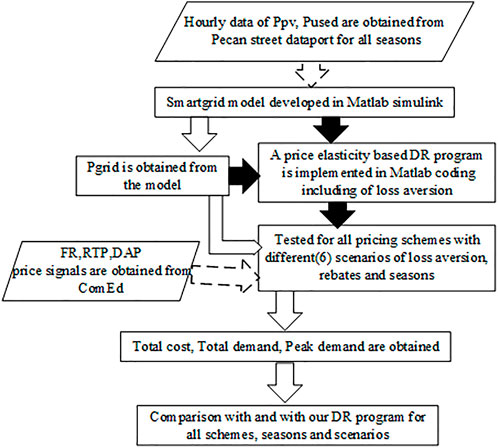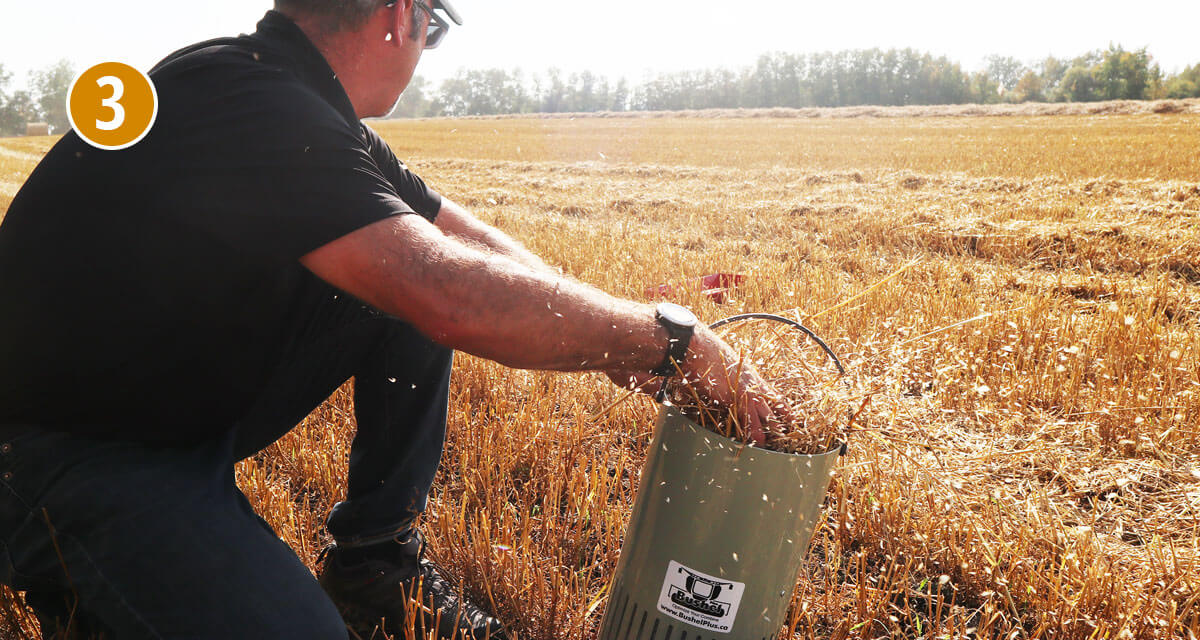Report on Strategies for Mitigating Overconsumption in the Fashion Industry
Introduction: The Conflict Between Fast Fashion and Sustainable Development
The contemporary fashion industry, characterized by rapid production cycles and algorithm-driven consumerism, presents a significant challenge to global sustainability efforts. This model directly conflicts with the principles of SDG 12: Responsible Consumption and Production, leading to excessive waste, environmental degradation, and social inequalities. This report outlines a multi-faceted approach to address these issues, drawing on insights from activists, educators, and innovators who are promoting systemic and individual shifts towards sustainability.
Individual and Educational Interventions for Sustainable Consumption
Fostering Responsible Consumption Patterns (SDG 12)
Individual action is a foundational component of shifting away from overconsumption. Activist and author Aja Barber advocates for a deliberate “cold turkey” approach to break ingrained purchasing habits. This strategy directly supports the targets of SDG 12 by encouraging consumers to reduce their material footprint. Key methods include:
- A prolonged pause from purchasing new items to reassess existing wardrobes.
- Conscious downsizing through reselling and gifting to extend the lifecycle of garments.
- Challenging the psychological link between purchasing and happiness, thereby reducing overall demand.
This process of mindful consumption is critical for mitigating the colonialist waste stream, where textile waste from the Global North disproportionately burdens nations like Ghana, a practice that undermines SDG 10: Reduced Inequalities.
The Role of Education for Sustainable Development (SDG 4)
A fundamental shift in consumer behaviour requires enhanced literacy and critical reflection, aligning with SDG 4: Quality Education. Dr. Stine Hedegaard of the London College of Fashion emphasizes educating future marketing professionals to critically evaluate the contradiction of promoting products in a world that must consume less. The curriculum focuses on instilling an understanding of the broad consequences of consumption, thereby equipping the next generation of industry leaders to champion sustainable practices.
Connecting Fashion to Environmental Stewardship and Biodiversity
Protecting Life on Land and Below Water (SDG 14 & SDG 15)
Educational programs are increasingly highlighting the fashion industry’s direct impact on ecosystems. Dr. Hedegaard’s curriculum explores fashion’s dependency on natural resources and its contribution to biodiversity loss, a critical issue for SDG 15: Life on Land. By informing students and consumers of this connection, the goal is to foster a mindset shift that prioritizes environmental health.
This connection is also being forged at the community level. Amanda Charles, founder of the swimwear brand Made of Water, demonstrates a business model rooted in environmental appreciation. Her brand utilizes ECONYL®, a material regenerated from ocean waste, directly contributing to the objectives of SDG 14: Life Below Water. The brand’s ethos, built around a community of cold-water swimmers connected to the sea, promotes intentional dressing over transient trends, embodying the principles of slow fashion.
Technological Innovation and Partnerships for a Circular Economy
Advancing Sustainable Industry and Infrastructure (SDG 9)
While individual and community efforts are vital, industry-wide transformation requires technological innovation, a key component of SDG 9: Industry, Innovation and Infrastructure. The startup RE&UP is pioneering textile-to-textile recycling technology capable of breaking down complex blended fabrics. This innovation is crucial for “closing the loop” in production, creating a circular economy where waste is minimized and resources are reused, directly supporting the targets of SDG 12.
The Importance of Partnerships for the Goals (SDG 17)
Scaling such innovations requires collaboration across the sector. The partnership between RE&UP and the global brand Puma exemplifies SDG 17: Partnerships for the Goals. Such collaborations are essential for integrating circular solutions into mainstream supply chains, providing a practical pathway to reduce the industry’s reliance on virgin materials and achieve a state where no textile is considered non-recyclable.
Conclusion: A Synthesized Path Towards Sustainable Fashion
Achieving a sustainable fashion industry requires a holistic approach that integrates individual responsibility, robust education, community action, and technological advancement. The path forward involves a series of progressive and scalable actions that align with the 2030 Agenda for Sustainable Development.
- Begin with small, individual commitments, such as substituting a new purchase with a secondhand item.
- Gradually increase the proportion of secondhand and sustainably sourced items in one’s wardrobe.
- Utilize the resulting financial capacity to support ethical designers and brands committed to sustainable production.
These combined efforts, from individual choices to large-scale industrial partnerships, create a powerful momentum for change, contributing not only to SDG 12 but also to a broader spectrum of goals including SDG 4, 9, 10, 14, and 15, ultimately fostering a more equitable and environmentally responsible global community.
1. Which SDGs are addressed or connected to the issues highlighted in the article?
SDG 12: Responsible Consumption and Production
- The article’s central theme is the critique of the fast fashion industry’s model of overproduction and the promotion of overconsumption. It explicitly discusses the need to “consume less,” “shop without thinking,” and the consequences like “overstuffed wardrobes.” Activist Aja Barber’s philosophy to “slow down” and the work of startups like RE&UP on recycling directly address the principles of responsible consumption and production.
SDG 13: Climate Action
- The article directly links the fashion industry to “climate breakdown.” This connection highlights how the production, transportation, and disposal of textiles contribute to greenhouse gas emissions and other environmental factors driving climate change.
SDG 15: Life on Land
- The connection between fashion and biodiversity is a key point, particularly in the section discussing Dr. Stine Hedegaard’s curriculum. It states, “Consumption practices impact the environment, nature, people and communities,” and the goal is to educate students on how fashion “contributes to biodiversity loss” through its dependency on natural resources.
SDG 14: Life Below Water
- This goal is addressed through the example of the swimwear brand Made of Water. The article mentions that their products are made from “ECONYL®, which is regenerated nylon from ocean waste.” This directly relates to tackling marine pollution and finding innovative uses for marine debris.
SDG 4: Quality Education
- The article emphasizes the role of education in shifting mindsets. It highlights the work of Dr. Stine Hedegaard at the London College of Fashion, whose course on “MA Fashion Marketing & Sustainability” trains future professionals to critically evaluate the industry. Aja Barber’s call for society to become “more of a reading society” to “think deeper on these issues” also underscores the importance of education for sustainable development.
2. What specific targets under those SDGs can be identified based on the article’s content?
SDG 12: Responsible Consumption and Production
- Target 12.2: By 2030, achieve the sustainable management and efficient use of natural resources. The article’s focus on “consuming less,” the impact of consumption on “natural resources,” and the need to “slow down” consumption patterns directly align with this target.
- Target 12.5: By 2030, substantially reduce waste generation through prevention, reduction, recycling and reuse. This is evident in the discussion of “textile landfills,” Aja Barber’s process of “reselling, gifting, and consciously downsizing her wardrobe,” the promotion of buying “secondhand items,” and the work of RE&UP, a “textile-to-textile recycling startup” aiming to “close the loop.”
- Target 12.8: By 2030, ensure that people everywhere have the relevant information and awareness for sustainable development and lifestyles in harmony with nature. The educational efforts of Aja Barber and Dr. Hedegaard, who aim to make consumers and students aware of fashion’s impacts, directly support this target. The article itself, and the survey it promotes, are tools for raising this awareness.
SDG 14: Life Below Water
- Target 14.1: By 2025, prevent and significantly reduce marine pollution of all kinds, in particular from land-based activities, including marine debris. The mention of Made of Water using ECONYL®, a material created from “regenerated nylon from ocean waste,” is a direct response to the problem of marine debris and an innovative solution contributing to this target.
SDG 15: Life on Land
- Target 15.5: Take urgent and significant action to reduce the degradation of natural habitats, halt the loss of biodiversity. Dr. Hedegaard’s curriculum, which educates students on “how that [fashion’s dependency on natural resources] contributes to biodiversity loss,” directly addresses the need for action and awareness to protect terrestrial ecosystems from the impacts of raw material extraction for fashion.
SDG 4: Quality Education
- Target 4.7: By 2030, ensure that all learners acquire the knowledge and skills needed to promote sustainable development. The description of the “MA Fashion Marketing & Sustainability” course at London College of Fashion, which provides students with a “critical evaluation” of the industry’s contradictions and educates them on sustainability, is a clear example of education for sustainable development in practice.
3. Are there any indicators mentioned or implied in the article that can be used to measure progress towards the identified targets?
Indicators for SDG 12 Targets
- Indicator for Target 12.5 (Waste Reduction): The article implies several indicators.
- The volume of waste in “textile landfills of the Global South” serves as a baseline indicator of the problem.
- The amount of textiles recycled by companies like RE&UP, which “breaks down blended fabrics,” can be a direct measure of progress.
- The proportion of “secondhand items” in wardrobes, as suggested by Aja Barber, is a consumer-level indicator of reduction and reuse.
- Indicator for Target 12.8 (Awareness):
- The existence and enrollment in educational programs like the “MA Fashion Marketing & Sustainability” course can serve as an indicator of education for sustainable lifestyles.
- Public engagement with information, such as through the survey mentioned at the end of the article (“Are we disconnected from nature? And is it fuelling fashion overconsumption?”), can be used to gauge public awareness and mindset shifts.
Indicator for SDG 14 Target
- Indicator for Target 14.1 (Marine Pollution):
- The volume of “ocean waste” collected and converted into new materials like ECONYL® is a tangible indicator of reducing marine debris.
Indicator for SDG 15 Target
- Indicator for Target 15.5 (Biodiversity):
- The article implies an educational indicator: the extent to which the “link between fashion and biodiversity” is integrated into fashion education curricula, as it is described as a “niche topic – but it’s growing.”
Indicator for SDG 4 Target
- Indicator for Target 4.7 (Education for Sustainable Development):
- The article points to the integration of sustainability into mainstream education as an indicator. The example of the London College of Fashion course, which trains “future marketers… to sell in a world that urgently needs to consume less,” shows how ESD is being embedded in vocational and higher education.
4. Table of SDGs, Targets, and Indicators
| SDGs | Targets | Indicators Identified in the Article |
|---|---|---|
| SDG 12: Responsible Consumption and Production |
12.2: Achieve the sustainable management and efficient use of natural resources.
12.5: Substantially reduce waste generation through prevention, reduction, recycling and reuse. 12.8: Ensure people have relevant information and awareness for sustainable lifestyles. |
– Reduced overall consumption of new clothing items (“consuming less”).
– Volume of textile waste in landfills; Amount of textiles recycled (RE&UP’s work); Proportion of secondhand items purchased. – Number of educational courses on sustainable fashion (London College of Fashion); Public awareness measured through surveys. |
| SDG 13: Climate Action | (General relevance) | – Awareness of the fashion industry’s contribution to “climate breakdown.” |
| SDG 14: Life Below Water | 14.1: Prevent and significantly reduce marine pollution and debris. | – Volume of “ocean waste” regenerated into new materials (e.g., ECONYL®). |
| SDG 15: Life on Land | 15.5: Halt biodiversity loss. | – Integration of fashion’s impact on biodiversity into educational curricula. |
| SDG 4: Quality Education | 4.7: Ensure all learners acquire knowledge and skills for sustainable development. | – Number and content of higher education courses focused on sustainability in specific industries (e.g., MA Fashion Marketing & Sustainability). |
Source: independent.co.uk







